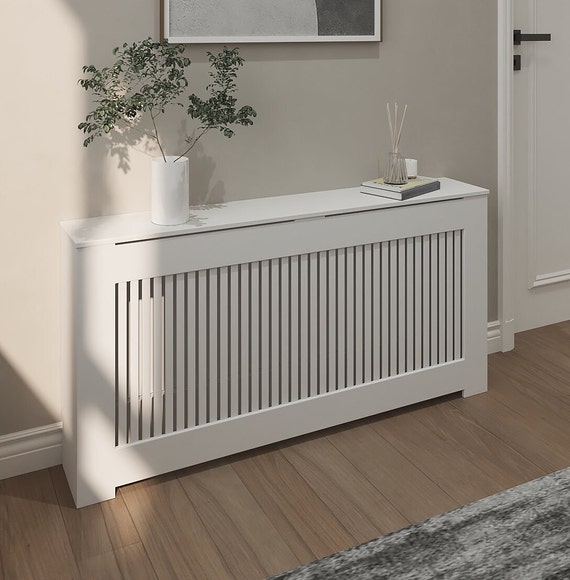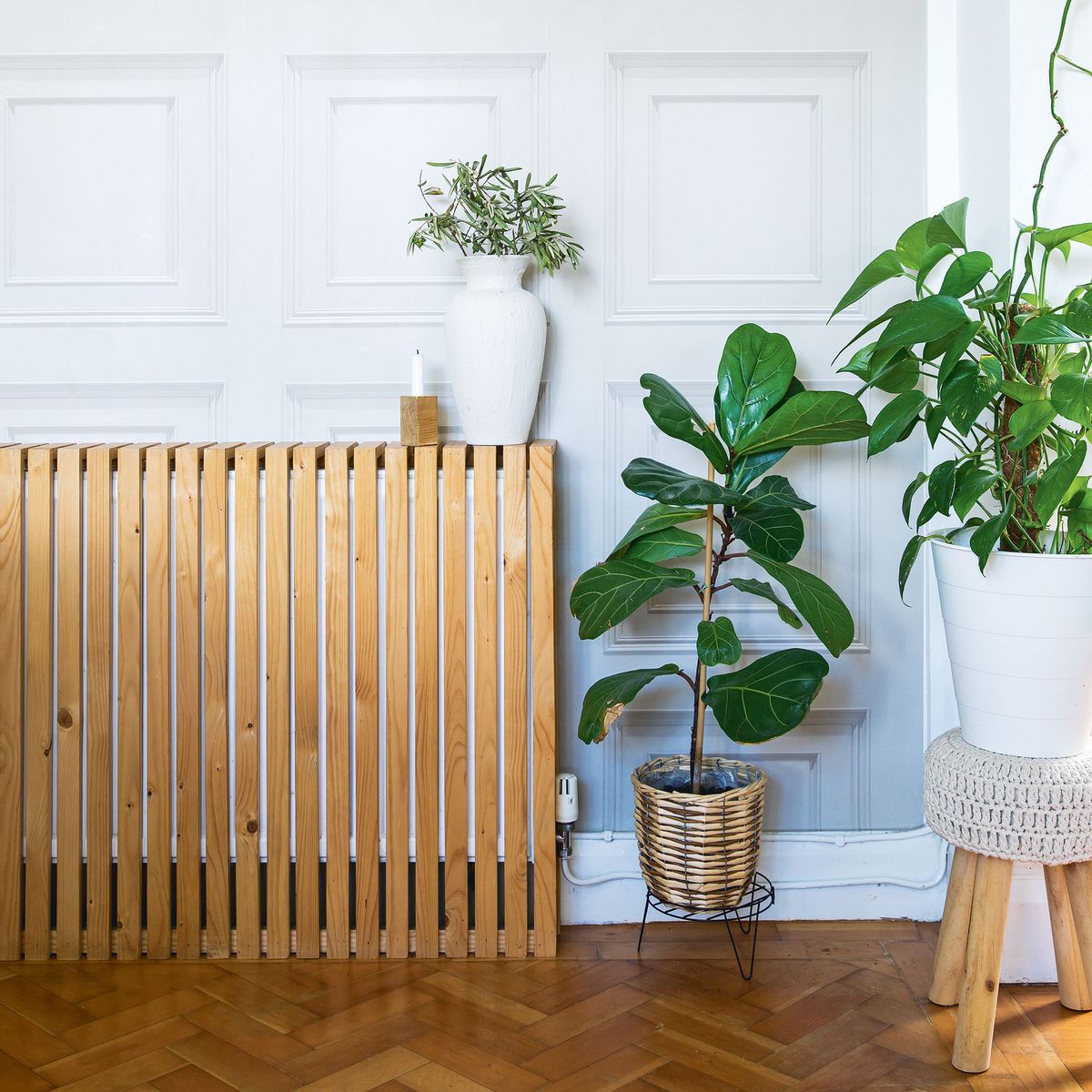How a Radiator Cover Can Improve Your Room's Aesthetic Allure
How a Radiator Cover Can Improve Your Room's Aesthetic Allure
Blog Article
Radiator Covers: Understanding Materials, Styles, and Benefits
Radiator covers offer both useful and visual functions within a home, using a variety of products such as metal, mdf, and wood to suit different layout choices. Picking the appropriate radiator cover includes comprehending the nuances of materials, layouts, and their linked advantages.
Sorts Of Products


Wood covers, frequently crafted from hardwoods such as oak or maple, offer a traditional, cozy look that complements typical interiors. Their sturdiness and capacity to be tarnished or repainted add to their versatility. Steel covers, commonly made from steel or light weight aluminum, are preferred for their effectiveness and modern appearance, frequently including streamlined lines that improve modern areas.
MDF, a produced wood item, is preferred for its cost-effectiveness and simplicity of modification. It can be painted or ended up to match existing decoration while offering a smooth surface area. Plastic covers, while much less common, are immune and light-weight to moisture, making them ideal for humid settings.
Ultimately, the choice of product for a radiator cover should straighten with the property owner's style preferences, useful requirements, and the certain setting where the cover will be mounted. Each product uses an unique character, guaranteeing that there is a choice to fit every preference and setup.
Popular Layout Styles
Highlighting visual allure, prominent style styles for radiator covers show a variety of preferences and interior decoration trends. Traditional styles commonly feature intricate woodwork and elaborate detailing, making them appropriate for vintage-inspired or traditional insides. These covers typically integrate sculpted elements, offering a cozy and welcoming feel to any type of space.
In contrast, contemporary layouts concentrate on minimal aesthetics, characterized by clean lines and downplayed sophistication. Products such as metal or streamlined wood with a smooth coating are generally made use of, enabling these covers to mix perfectly into modern-day spaces. Industrial designs, on the other hand, embrace resources like subjected metal and concrete, adding a strong declaration to loft or urban setups.
For those seeking a distinct touch, bespoke layouts use modification options that cater to private choices, allowing property owners to choose shades, patterns, and products that complement their style. In addition, farmhouse-style covers incorporate rustic components, featuring distressed wood and simple types that stimulate a comfy, nation beauty.
Benefits of Radiator Covers
Radiator covers not only boost the aesthetic allure of an area yet also provide a number of useful benefits that make them a worthwhile addition to any home. One of the main benefits is security, particularly in houses with children or pet dogs. Covers minimize the risk of burns from hot radiator surface areas, making certain a safer environment.
Furthermore, radiator covers can boost energy effectiveness. By guiding warm into the area instead than permitting it to escape, they aid maintain a consistent temperature, minimizing heating expenses gradually. This is specifically helpful in older homes where radiator systems might be much less reliable.
Another remarkable benefit is sound reduction. Radiators can sometimes create undesirable noises during operation, and covers can assist smother these noises, adding to a more calm home. Furthermore, radiator covers can be practical, supplying extra storage space or display space, thereby maximizing the energy of often-overlooked locations.
Lastly, they can safeguard radiators from dust and particles, which can prevent efficiency and boost maintenance needs. With these combined advantages, radiator covers become a functional remedy for boosting both the performance and design of any kind of home atmosphere.
Installation Considerations
Setting up radiator covers needs cautious consideration to make sure both performance and safety (Radiator cover). Assess the measurements of your radiator and the surrounding room to make certain a proper fit. Accurate measurements are crucial; an uncomfortable cover can block warm circulation or develop safety risks
Following, examine the material of the cover. While timber offers visual allure, steel options might supply better sturdiness and heat resistance. Think about the weight of the cover too; much heavier covers might call for added assistance or reinforcements to avoid sagging or damages in time.
Air flow is another crucial aspect. Covers must feature appropriate air movement to avoid overheating and keep reliable heating. Search for styles with slats or perforations that enable heat to circulate without blockage.
Furthermore, make sure that the cover is securely mounted to stop accidents, especially in homes with children or animals. Radiator cover. It's suggested to follow the producer's setup guidelines very closely and, my blog if necessary, speak with a specialist for intricate installments
Maintenance and Treatment Tips
Appropriate maintenance of radiator covers is important for ensuring their long life and optimal efficiency. For repainted or wood covers, take into consideration a suitable polish or safety finish to keep their appearance.
Evaluate the covers periodically for indicators of wear or damage, such as cracks or peeling off paint. Resolving these problems immediately can avoid more wear and tear. Guarantee that the covers are safely secured and look for any loosened screws or fittings, as vibrations from the radiator can loosen them gradually.
In colder months, stay clear of positioning hefty things or attractive items on top of the radiator covers, as this can hamper warm distribution and trigger unnecessary stress to the framework. Last but not least, consider seasonal upkeep by removing the covers for comprehensive cleansing and examination throughout warmer months when the home heating system is non-active. Embracing these straightforward treatment suggestions will boost the efficiency and visual appeal of your radiator covers, guaranteeing they serve their purpose successfully for many years to find.

Conclusion
In recap, radiator covers serve as practical and aesthetic improvements to household rooms. The diverse array of products, including woods, metal, MDF, and plastic, enables positioning with various layout styles such as typical, contemporary, industrial, and farmhouse. The advantages of these covers extend past safety and energy performance to consist of added storage space and dirt protection. Careful consideration of installment and upkeep more makes sure the durability and efficiency discover this of radiator covers in any kind of home environment.
Radiator covers offer both visual and practical objectives within a home, providing a range of products such as steel, mdf, and hardwood to suit numerous style preferences. Choosing the best radiator cover includes comprehending the subtleties of materials, layouts, and their associated advantages.Emphasizing visual charm, preferred layout styles for radiator covers mirror a range of preferences and indoor layout fads.Radiator covers not only improve the visual appeal of an area however also provide numerous useful advantages that make them a beneficial addition to any home. Consider the weight of the cover as well; larger covers might call for additional support visit here or supports to stay clear of sagging or damage over time.
Report this page